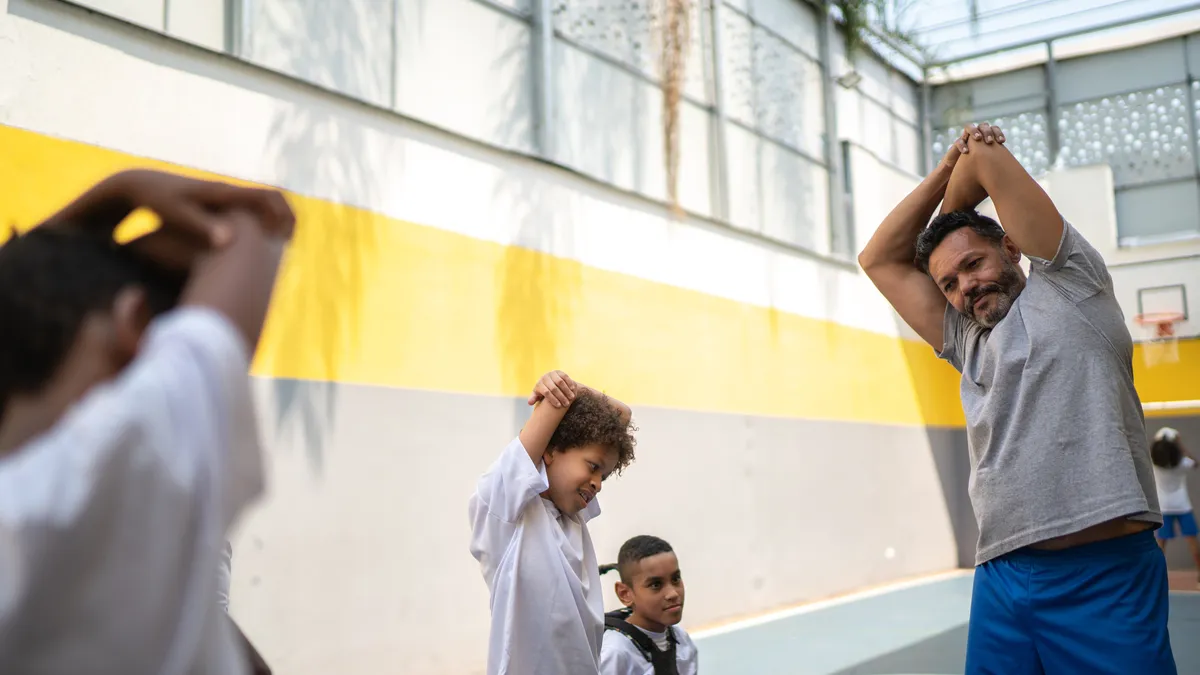In Chicago and other similar urban settings, safety concerns can significantly prevent children from going outside and being physically active, a Chicago community policing sergeant told the White House Conference on Hunger, Nutrition and Health on Wednesday.
“Parents are making the choice to keep their kids inside, because they believe that’s the only way to save their lives,” said Jermaine Harris, a community policing sergeant in the Chicago Police Department. “This issue around safety and around guns and around violence is causing so much damage and so much pain to our health and our ability to be nourished.”
But when older ball fields and parks were cleaned up and reclaimed by Chicago Westside Sports — a partnership Harris co-founded with local police, faith-based groups and nonprofit organizations — a catalyst was sparked, he said.
Parents started to see those spaces as a symbol of safety, and other groups began to hold their own sports practices in parks next to Chicago Westside Sports’ activities, Harris said. An artist even approached Harris and asked if he could introduce art therapy to the young players participating in Westside sports.
“So before practice, everyone’s laid out in the outfield painting masterpieces,” he said. “It started to now make this space be known as this positive center that we can rebuild around.”
Another barrier that can prevent children from being physically active is a lack of time in the school day to get them moving, said panelist Catherine Grano, a school nurse at Middletown Township Public Schools in New Jersey. A child’s low self-esteem or poor nutrition can be additional roadblocks, she said.
By age 9, girls often stop participating in sports, and the trend worsens as they get older, said panelist Ann Marie Krautheim, CEO of nonprofit GENYOUth.
GENYOUth surveyed about 500 physical education teachers and found the competitive nature of sports can be intimidating and has contributed to self-esteem and body image concerns, particularly for girls, Krautheim said.
In September, the National Federation of State High School Associations found a 4% percent decline in the number of high school students participating in sports between the 2018-19 and 2021-22 school years.
It’s critical that schools encourage students to design, inform and lead solutions to lagging physical activity, Krautheim said.
“We find that when youth are at the center, they identify solutions that us as adults with all our good intentions may never have developed,” Krautheim said.
For Grano, schools are also crucial to the efforts. For example, she said, physical activity should be built into daily lessons. Staff members are role models to students, too, so building trusting relationships can help adults encourage physical activity, she said.
Grano’s district created a "wellness revolution" program that tapped into community collaboration and helped provide free fitness equipment to schools. Every day, Grano said, her district works to encourage efforts like dedicating several minutes in the morning for physical activity, running a lap during recess or participating in before- and after-school group walks.
“Getting people involved throughout the course of the day is really what I want to focus on at the school level,” Grano said.






 Dive Awards
Dive Awards








